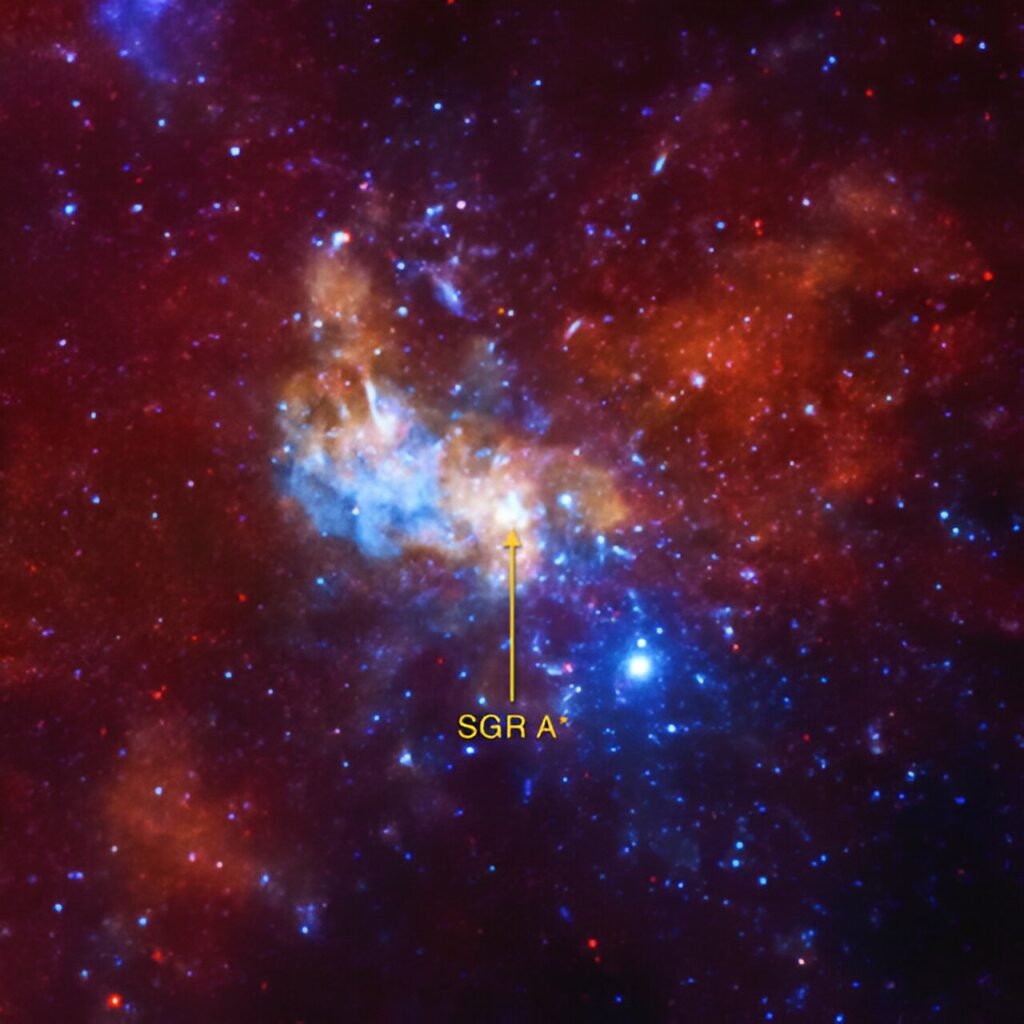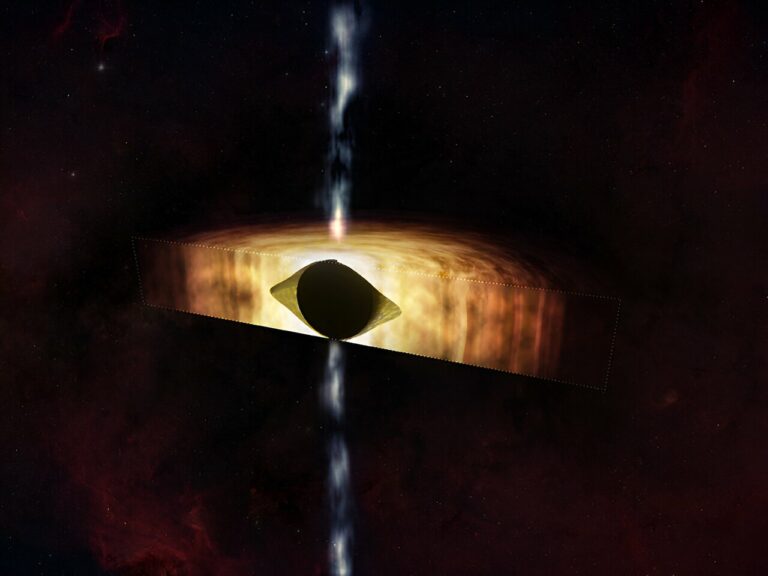Telescopic Observations Indicate the Milky Way’s Black Hole is Primed for a Forceful Push
A recent study utilizing data from NASA’s Chandra X-ray Observatory and the National Science Foundation’s Karl G. Jansky Very Large Array (VLA) has revealed that the supermassive black hole at the center of the Milky Way is rotating at an astonishing speed, causing the spacetime surrounding it to warp into a shape resembling a football. This colossal black hole, known as Sagittarius A* (Sgr A* for short), is situated approximately 26,000 light-years away from Earth within the heart of our galaxy.
Black holes possess two fundamental characteristics: their mass, which determines their weight, and their spin, which indicates their rotational speed. By determining either of these values, scientists can gain valuable insights into the nature and behavior of a black hole.
A team of researchers employed a novel approach that involved analyzing X-ray and radio data to ascertain the rotational velocity of Sgr A* by observing the movement of material as it flows towards and away from the black hole. Their findings revealed that Sgr A* is spinning at an angular velocity, or the number of revolutions per second, that amounts to approximately 60% of the maximum possible value. This maximum limit is determined by the fact that no material can exceed the speed of light.
Previous studies conducted by different astronomers utilized various techniques to estimate the rotation speed of Sgr A*, yielding a wide range of results, from the black hole being completely stationary to rotating at nearly the maximum rate.
Lead author Ruth Daly from Penn State University stated, “Our research may provide a resolution to the longstanding question regarding the rotational speed of the supermassive black hole at the center of our galaxy. Our findings indicate that Sgr A* is rotating at an exceptionally high speed, which is not only intriguing but also holds significant implications.”
The combination of time and the three dimensions of space, known as spacetime, is pulled by a rotating black hole as it spins. Additionally, the spacetime around the spinning black hole is compressed. When observing a black hole from above, along the axis of its jet, the spacetime takes on a circular shape. However, when viewed from the side, the spacetime resembles a football shape. It is worth noting that the faster the black hole spins, the flatter the football shape becomes.
The spin of a black hole plays a significant role as an energy source. Supermassive black holes that spin can generate focused outflows, such as narrow jets of material, by extracting energy from their spin. This process requires the presence of some matter in the vicinity of the black hole.
Due to the limited fuel surrounding Sgr A*, this particular black hole has been relatively inactive in recent millennia, producing weak jets. However, this research suggests that the situation could change if there is an increase in the amount of material near Sgr A*.
Biny Sebastian, a co-author from the University of Manitoba in Winnipeg, Canada, compares a spinning black hole to a rocket on a launch pad. Once material approaches the black hole closely enough, it is as if the rocket has been fueled and the ‘launch’ button has been pressed.

In the future, if there are changes in the properties of matter and the strength of the magnetic field near the black hole, it is possible that a portion of the black hole’s spin energy could drive more powerful outflows. These outflows could be fueled by gas or the remnants of a star that has been torn apart by the black hole’s gravity, particularly if the star comes too close to Sgr A*.
According to Megan Donahue, a co-author from Michigan State University, the jets powered and directed by a spinning black hole at the center of a galaxy can have a significant impact on the gas supply of the entire galaxy. This, in turn, affects the rate at which stars form. The presence of “Fermi bubbles” observed in X-rays and gamma rays around our Milky Way’s black hole suggests that the black hole was active in the past. Therefore, measuring the spin of our black hole is an important test to validate this scenario.
To determine the spin of Sgr A*, the authors utilized an empirically based theoretical method known as the “outflow method.” This method outlines the relationship between the black hole’s spin, its mass, the properties of matter near the black hole, and the characteristics of the outflow.
The collimated outflow generates radio waves, while the gas disk surrounding the black hole is responsible for X-ray emissions. By combining data from Chandra and the VLA, along with an independent estimate of the black hole’s mass from other telescopes, the researchers were able to constrain the spin of the black hole.
Anan Lu, a co-author from McGill University in Montreal, Canada, highlights the significance of Sgr A* being the closest supermassive black hole to us. Although it is currently inactive, their work demonstrates that in the future, it could exert an incredibly powerful influence on the surrounding matter. This eventuality could occur in thousands or millions of years, or even within our lifetimes.
This article is republished from PhysORG under a Creative Commons license. Read the original article.
Do not forget to share your opinion with us to provide you with the best posts !




0 Comments